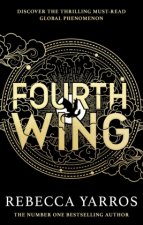
Kód: 11525497
Carrying the War to the Enemy
Autor Michael R. Matheny
Surprising new evidence of operational art among U.S. commanders in World War II Military commanders turn tactics into strategic victory by means of "operational art," the knowledge and creative imaginat ... celý popis
- Jazyk:
 Angličtina
Angličtina - Vazba: Brožovaná
- Počet stran: 360
Nakladatelství: University of Oklahoma Press, 2012
- Více informací o knize

848 Kč

Skladem u dodavatele v malém množství
Odesíláme za 12-17 dnů
Potřebujete více kusů?Máte-li zájem o více kusů, prověřte, prosím, nejprve dostupnost titulu na naši zákaznické podpoře.
Přidat mezi přání
Mohlo by se vám také líbit
-

The Life of Nathanael Greene: Major-General in the Army of the Revolution
1017 Kč -

The White Woman on the Green Bicycle
560 Kč -

Vision Machine
528 Kč -

The Dhulyn and Parno Novels: Volume One
306 Kč -

Miners and Millhands
1133 Kč -

Organ Works, Op. 37/65: Organ Solo
494 Kč -

Benny Moon
233 Kč
Darujte tuto knihu ještě dnes
- Objednejte knihu a zvolte Zaslat jako dárek.
- Obratem obdržíte darovací poukaz na knihu, který můžete ihned předat obdarovanému.
- Knihu zašleme na adresu obdarovaného, o nic se nestaráte.
Více informací o knize Carrying the War to the Enemy
Nákupem získáte 85 bodů
 Anotace knihy
Anotace knihy
Surprising new evidence of operational art among U.S. commanders in World War II Military commanders turn tactics into strategic victory by means of "operational art," the knowledge and creative imagination commanders and staff employ in designing, synchronizing, and conducting battles and major operations to achieve strategic goals. Until now, historians of military theory have generally agreed that modern operational art developed between the first and second world wars, not in the United States but in Germany and the Soviet Union, whose armies were supposedly the innovators and greatest practitioners of operational art. Some have even claimed that U.S. forces struggled in World War II because their commanders had no systematic understanding of operational art. Michael R. Matheny believes previous studies have not appreciated the evolution of U.S. military thinking at the operational level. Although they may rightly point to the U.S. Army's failure to modernize or develop a sophisticated combined arms doctrine during the interwar years, they focus too much on technology or tactical doctrine. In his revealing account, Matheny shows that it was at the operational level, particularly in mounting joint and combined operations, that senior American commanders excelled-and laid a foundation for their country's victory in World War II. Matheny draws on archival materials from military educational institutions, planning documents, and operational records of World War II campaigns. Examining in detail the development of American operational art as land, sea, and air power matured in the twentieth century, he shows that, contrary to conventional wisdom, U.S. war colleges educated and trained commanders during the interwar years specifically for the operational art they employed in World War II. After 1945, in the face of nuclear warfare, the American military largely abandoned operational art. But since the Vietnam War, U.S. commanders have found operational art increasingly important as they pursue modern global and expeditionary warfare requiring coordination among multiple service branches and the forces of allied countries. Michael R. Matheny retired after 30 years with the U.S. Army to earn a Ph.D. in military history and join the faculty of the Department of Military Strategy, Planning, and Operations at the U.S. Army War College, Carlisle Barracks, Pennsylvania
 Parametry knihy
Parametry knihy
848 Kč
- Plný název: Carrying the War to the Enemy
- Podnázev: American Operational Art to 1945
- Autor: Michael R. Matheny
- Jazyk:
 Angličtina
Angličtina - Vazba: Brožovaná
- Počet stran: 360
- EAN: 9780806143248
- ISBN: 080614324X
- ID: 11525497
- Nakladatelství: University of Oklahoma Press
- Hmotnost: 578 g
- Rozměry: 229 × 152 × 22 mm
- Datum vydání: 30. June 2012
Oblíbené z jiného soudku
-

Haunting Adeline
617 Kč -

Berserk Deluxe Volume 1
1033 Kč -

Berserk Deluxe Volume 3
1138 Kč -

Berserk Deluxe Volume 2
1056 Kč -

LEGO Star Wars Visual Dictionary Updated Edition
534 Kč -

Atomic Habits
483 Kč -

White Nights
90 Kč -

Powerless
276 Kč -

Chainsaw Man, Vol. 15
251 Kč -

Harry Potter and the Prisoner of Azkaban (Minalima Edition)
978 Kč -

Berserk Deluxe Volume 5
1115 Kč -

Hunting Adeline
633 Kč -

House of Leaves
405 Kč -

Iron Flame
462 Kč -

Cry Baby Coloring Book
257 Kč -

JUJUTSU KAISEN V22
241 Kč -

The Official Stardew Valley Cookbook
607 Kč -

Gravity Falls Journal 3
427 Kč -

Dune Messiah
178 Kč -

The 48 Laws of Power
523 Kč -

Twisted Lies
276 Kč -

Dune
195 Kč -

Heaven Official's Blessing: Tian Guan Ci Fu (Novel) Vol. 2
442 Kč -

Surrounded by Idiots
256 Kč -

Twisted Love
258 Kč -

Berserk Deluxe Volume 4
1165 Kč -

Berserk Deluxe Volume 6
1086 Kč -

A Little Life
258 Kč -

Heaven Official's Blessing: Tian Guan Ci Fu (Novel) Vol. 1
357 Kč -

Bungo Stray Dogs, Vol. 8 (light novel)
389 Kč -

Twisted Games
276 Kč -

Fourth Wing
214 Kč -

CHAINSAW MAN V14
248 Kč -

King of Sloth
276 Kč -

48 Laws Of Power
471 Kč -

Court of Thorns and Roses Paperback Box Set (5 books)
1113 Kč -

The Husky and His White Cat Shizun: Erha He Ta de Bai Mao Shizun (Novel) Vol. 5
373 Kč -

Berserk Deluxe Volume 10
1163 Kč -

No Longer Human
330 Kč -

Court of Thorns and Roses
218 Kč -

Court of Mist and Fury
221 Kč -

Raising Mentally Strong Kids: How to Combine the Power of Neuroscience with Love and Logic to Grow Confident, Kind, Responsible, and Resilient Child
607 Kč -

Heaven Official's Blessing: Tian Guan Ci Fu Vol. 4
441 Kč -

Twisted Series 4-Book Boxed Set
1064 Kč -

Vagabond (VIZBIG Edition), Vol. 1
536 Kč -

Powerful
265 Kč -

Dead Poets Society
176 Kč -

A Court of Silver Flames
276 Kč -

Throne of Glass Box Set (Paperback)
2146 Kč
Osobní odběr Praha, Brno a 12903 dalších
Copyright ©2008-24 nejlevnejsi-knihy.cz Všechna práva vyhrazenaSoukromíCookies


 Vrácení do měsíce
Vrácení do měsíce 571 999 099 (8-15.30h)
571 999 099 (8-15.30h)